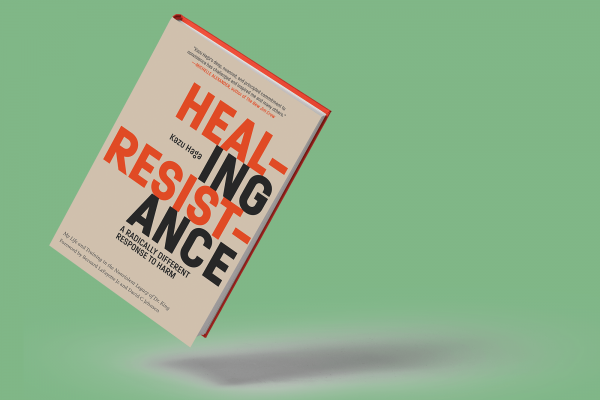NONVIOLENCE. WHEN YOU hear the term, what do you think? In your mind’s eye, what do you see? Black and white newsreels of college students dressed in their Sunday best, picketing segregated businesses? Perhaps you imagine Gandhi’s historic salt march to the sea or Martin Luther King Jr. leading the faithful onto the Edmund Pettus Bridge in Selma.
It’s not uncommon to hear “nonviolence” and think “protest.” There is much value in this association. History demonstrates that nonviolence can be an effective tactic for promoting political change. But in Healing Resistance: A Radically Different Response to Harm, Kazu Haga shows us that it can be much more than a political tool.
Haga—a nonviolence trainer and founder of East Point Peace Academy in Oakland, Calif.—was influenced by the Kingian nonviolence principles and curriculum of Bernard LaFayette Jr. and David C. Jehnsen (who co-wrote this book’s foreword). Haga weaves these principles with lessons from Buddhism, social justice activism, and trauma work, illustrating how we might embrace nonviolence to transform both ourselves and our world.
Read the Full Article

